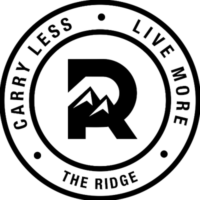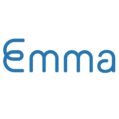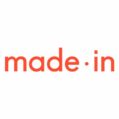Launching a Successful Kickstarter: Q&A with DTC Wallet Brand The Ridge
by Hugh Williams on 19th Aug 2019 in News


In this Q&A, DTC Daily talks to Daniel Kane (pictured below), CEO & co-founder, The Ridge, whose front-pocket wallet business is generating over USD$20m (£16m) a year, and seeing returns rates of lower than 2%, to find out the key to his success, and how the business has continued to bring in new customers.
Why did you decide a DTC model was the best way to sell your products?
When I launched The Ridge, the direct-to-consumer model was the only one I knew. I spent the end of high school selling video game equipment through forums and accepting payments through PayPal, so my background was really direct-to-customer in the most literal sense, second to going door-to-door to hand deliver the packages.
Aside from simple constraints and the easy-to-upstart nature of pure-play e-commerce businesses, I had found a number of benefits with the DTC model, and saw the market for these kinds of businesses growing rapidly.
In 2012 and 2013, it was a lot easier to acquire a new customer than to give up the margins to a third party retailer. We saw Supreme do this with their own stores in the 90s and companies like Bonobos take a brand-first approach to online retail in the late 2000s. They realised they could build the distribution channels to get in front of prospective customers for less than the 50-60% margins that retailers take, and that it was more meritocratic than trying to win over the favour of the buyer of a department store.
For people wanting to start online businesses like myself, the key was Kickstarter, Shopify, and Facebook. We were able to get organic traction through a successful Kickstarter campaign and parlay that into a standalone online store with Shopify and online acquisition channels with Facebook—all without external funding.
The undervalued element of the DTC model that is likely the most important, but also slightly less obvious: owning the customer experience. Brands typically forfeit their relationship with the consumer in the traditional retail model by allowing the transaction to take place with third party retailers. At The Ridge, we take a lot of pride in not only acquiring customers, but maintaining that relationship. Our wallets are guaranteed for life, so we have a huge focus on customer support and ensuring that our customers are taken care of. This long-term relationship has been particularly beneficial for us as we’ve expanded our product line and tap back into our existing customer base.
As your business has grown, how have you continued to bring in new customers?
This is something we’re discussing constantly with other digitally native brands. There was this arbitrage opportunity over the last decade or so where digital ad space was largely underpriced; people were spending a lot of time online without there being many advertisers. Now, the number of advertisers on Facebook has increased seven-fold – which from an economics perspective, has priced out a lot of brands which would’ve flourished three or four years ago, so everyone has to get a bit more creative.

Daniel Kane, CEO & co-founder, The Ridge
What we’re doing now is two things: we’re trying to make each impression more impactful while being cost effective, and we spend a lot of time working with content creators on YouTube. Billions of hours are spent there everyday, and developing deep integrations with the creators that viewers care about can make for really effective collaborations with brands like ours.
The second is just being more thoughtful in how we’re speaking to customers. When everything was underpriced, brands didn’t have to be too nuanced and a lot of things that shouldn’t have worked were able to. We care deeply about what messages we’re showing to what people at which times in the customer journey. As the prices of online advertising increase, brands have to be that much more thoughtful and effective.
How do you decide when the time is right to seek external funding?
We haven’t received any external funding outside of our initial Kickstarter campaigns, and have really prioritised bootstrapping and organic growth. We’ve been able to reach tremendous success and revenues as a privately-owned business, and I’m fortunate to have a network of other entrepreneurs who can give me guidance as we scale. Once we hit an inflection point that we feel like we need to make significant investment – whether that be in manufacturing, hiring, retail, etc. – we are open to considering it, but for now we are very proudly a privately-owned business.
What have been the major changes you have noticed from when you were a Kickstarter, to now?
When I launched projects on Kickstarter in 2012 and 2013, it was a very different place. There were far fewer active campaigns because there was an approval process. In turn, there was a lot more attention to go around to fewer projects, so there was a lot more organic traction.
Nowadays, anyone can launch a campaign, which means there is a long tail of ideas that will never receive any organic traction. To get that virality, you have to be regimented in your approach; capture emails months prior, spend up to USD$30k (£25k) on a memorable video, prepare to spend money across Facebook and publications, and more. It takes a skilled team to launch a successful Kickstarter today, and I’m fortunate that I was in a position to do it with my Dad and childhood friends in the earlier days.
What's next for The Ridge?
We’ve been hard at work manufacturing new types of wallets in lighter, more durable materials as well as new colours and prints. We’re looking to diversify from our core concepts to widen our customer base and sell the next million wallets.
While many people know The Ridge as a wallet company, we’re also doing a lot more than that now. The idea originally was to streamline how people carry their cash and cards, and we’re now looking to apply those same concepts across the rest of peoples’ daily items—phone cases, backpacks, duffel bags, etc.







Follow Fast Growth Brands